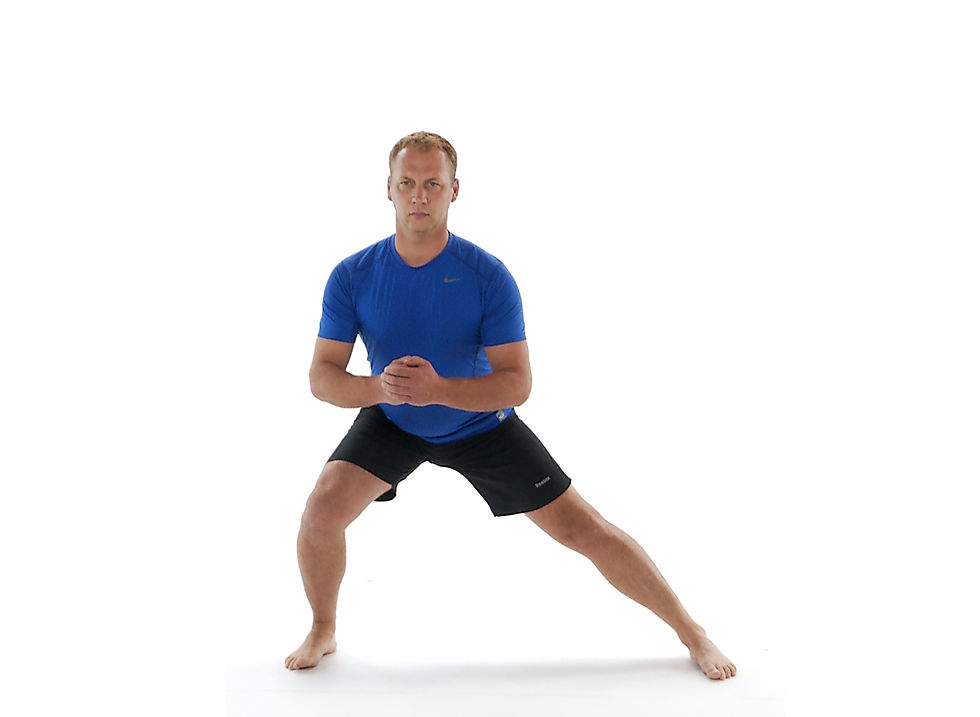Helpful Tips for Preventing Skiing Injuries on the Slopes this Winter
- K-Town Physio

- Jan 15
- 4 min read

Skiing is an exciting winter sport that offers a great way to enjoy the outdoors while staying active. As with any physical activity, skiing comes with a risk of injury, especially for beginners or those who push their limits on the slopes. At K-TOWN Physiotherapy, we understand the importance of injury prevention and how to keep your body in top shape for both cross-country and downhill skiing. By following a few simple tips, you can reduce your risk of injuries and enjoy your ski season to the fullest.
1. Perform a proper warm-up and stretch before hitting the slopes
Warming up your muscles is essential to prevent injuries. Prior to skiing, take 10-15 minutes to perform a dynamic warm-up. Focus on stretches and exercises that target key muscle groups, such as:
Quads: Strong quads help with stability when skiing, especially during descents
Hamstrings: Flexible hamstrings can reduce the risk of strains and knee injuries.
Groin & Glutes: Targeting hip abductor and adductor muscles can help with lateral movements.
Here are a few warm-up movements that can be utilized prior to hitting the hills:


i) Standing Hamstring Stretch
In standing, straighten your leg forward with your heel on the ground, toes pulled towards you, back straight/neutral, and one hand reaching towards the foot until you feel a gentle stretch down the back of your leg. Hold the position for 20-30 seconds.

ii) Standing Quadriceps Stretch
In standing, grab the front of one ankle with one hand and pull your foot back towards your buttock until you feel a gentle stretch in the front part of the thigh. Hold the position for 20-30 seconds.
iii) Forward Walking Lunges
Stand with your feet shoulder width apart, take a step forward bending your knee and hip to 90 degrees. Keep your torso upright and your foot aligned with your knee and hip. Bring your back leg in front to make another step. Repeat 10-20 times, alternating legs.

iv) Lateral Squat/Side Lunge
Stand with both feet wide apart and your hands together in front of you. Lean to one side, keeping your knee in line with your 2nd toe. Push through your heel to return to the starting position and repeat on the other side. Perform 10-20 times per side.
2. Focus on Balance and Core Strength
Skiing requires good balance, coordination, and strength, especially in your core. A strong core stabilizes your body and helps with movements like turning, stopping, and maintaining control on the slopes. Off-season strength training that targets the abdominals, lower back, and glutes can make a significant difference in your skiing performance.
Here are a few core and balances exercises for in- or off-season:

i) Front Plank
Start on your hands and knees, then prop yourself up on your forearms and toes, with your chin tucked in. Lift up, creating a straight line with your body. Maintain the position without arching the lower back for 20-30 seconds. Complete 3-5 rounds.

ii) Side Plank
Lie on your side with the knees bent to 90 degrees and the legs in line with the body. Support your upper body by placing your elbow directly under your shoulder. Slowly lift your hips/pelvis until your body is aligned. Maintain the position for 20-30 seconds. Complete 3-5 rounds.

iii) Single Leg Balance Clock
Place your hands on your hips and stand on one foot “centered in the clock”. Slowly reach with your other foot “around the clock” lightly tapping your foot down and returning to center. Repeat clockwise, tapping foot on each individual number. Complete a full circle on both sides.
3. Use Proper Ski Equipment
Having proper and correct fitting equipment can be crucial in preventing injury.Here are some considerations to ensure your gear is as safe as possible:
Get Fitted for Boots: Ill-fitting boots can cause discomfort and increase the likelihood of ankle and foot injuries. Make sure your boots are snug but not too tight and seek professional fitting advice at your local ski shop.
Check Ski Bindings: Ensure your ski bindings are correctly adjusted to your skiing style and level. Improperly adjusted bindings can result in frequent falls, leading to further injury especially if your bindings do not release correctly.
Wear Protective Gear: Helmets and wrist guards are essential for protecting against head injuries and wrist fractures. Ski goggles will help with visibility and protect your eyes from snow glare.
4. Start Slow and Ski Within Your Limits
Many skiers, especially beginners, make the mistake of trying to keep up with more advanced skiers. This can lead to overexertion and accidents. It's important to understand your skill level and progress at a pace that suits your abilities. Be sure to choose routes that match your skill level. If you feel discomfort, pain, or fatigue throughout the day/weekend, take a break. There’s no shame in calling it a day to enjoy an après ski beverage of choice!
5. Seek help from your local Physiotherapist
The tips and exercises noted above may not be specific to everyone, having regular physiotherapy consultations can ensure your body is prepared for the demands of skiing. With a tailored assessment, we can address any pre-existing conditions, such as muscle imbalances or joint instability, that may increase your injury risk. A specialized rehabilitation program is the best way to prepare for and prevent injuries on the slopes.
Skiing can be one of the most enjoyable winter activities, but it’s essential to take precautions to avoid injury. A proper warm-up and strengthening program, wearing the right equipment, and skiing within your limits can significantly reduce your risk of injury while skiing. If you’re planning to hit the slopes this winter, don’t hesitate to schedule an appointment with us at K-TOWN Physiotherapy!
Michael O’Meara, Registered Physiotherapist, Diploma Sport PT, (RISPT)



